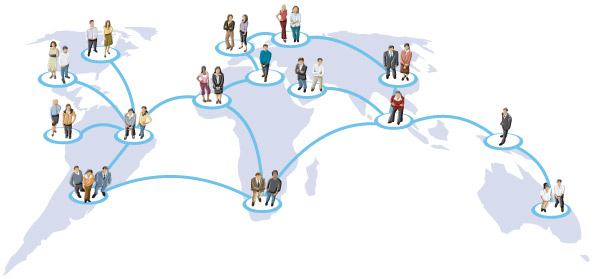
One of the coming developments I’ve been the most excited about in recent years are Groupnets (what I originally called “symbiont networks” in a 2004 article). Groupnets are tightly connected, sensor-equipped groups of individuals that automatically share rich and nearly 24/7 continous data (pictures, audio, video, data) about their lives to each other, allowing them to watch each other in realtime, review and relive recent events, and even speak words of encouragement into each other’s ears as appropriate. The group will be there for individuals when in they’re in need, and these folks will truly begin to see the world through each other’s eyes.

Because there are usually only a few people who are out on the far edges of the normal curve of emotions, thought, and behavior at any time, and a far larger number of others closer to the center of human feeling, thought, and behavior, this kind of tight connectivity always tends to keep folks out on the edge from engaging in too much extreme, dysfunctional, or destructive behavior, gently pulling them back toward the center of the group over time. When an extreme person talks in an emotionally open way to a normal person, they each engage their mirror neurons and related brain systems to internally represent other people’s feelings and thinking within their own heads. The more intimate and frequent social interaction becomes, the more the most adaptive ways of thinking (usually in the center, but occasionally on the edges of human thought and behavior) takes over, in the minds of any member of a cognitively diverse group. To increase the power of therapeutic social interactions, particularly dysfunctional people may need to be attached to particularly large but still intimate groups (for more on these claims, see the books below).
Over the next few decades, I’m convinced that Groupnets and the AI-enabled platforms they occur within will become the most powerful group-based emotional cognitive behavioral therapy we can use on a daily basis to continually improve our lives. They’ll be tremendously empowering for professional and self-improvement, for family and mental health therapy, addiction therapy, rehabilitation in prisons and during parole, any area where feeling, thought, and behavior change is particuarly difficult. Below is a brief 2008 video I did on the idea.
All the shared data of our groupnets will get autoarchived inside private social networks of highly emotionally and values-connected individuals, and autosummarized, like the way the AI behind Google Photos will now automatically find the most interesting moments in your uploaded video for sharing with others. These social networks will be our “Private Facebooks”, the Private Social Networks that many of us are still waiting to emerge, built to encourage sharing and strengthen the power of social bonds among our most intimate friends and family. That will be a social network that has all the core sharing capabilities we need, whose interface we can extensively control and customize with evidence-based insights from social psychology, and whose owners aren’t focused on advertisers over users.
Just as with desktop computers, whose incremental new features no longer held much interest for us once they reached a certain level of functionality in the mid 2000’s, allowing us to turn away from them toward more intimate and portable laptops, then tablets, then our phones, I think we’ll soon tire of additional “features” in the Facebook of today. When we want to do deep personal sharing on social platforms, I expect many of us will turn increasingly away from ad-driven corporate media social networks to Private Social Networks and Groupnets built by companies that share our particular values. Once these deep social sharing capabilities get commoditized, just as with desktop computers, Facebook, at least the kind of Facebook that exists today, won’t be the coolest thing on the block anymore. It will increasingly be seen as just another kind of ad-driven media property: something lowest common denominator and commercialized that we dip into only on occasion, and increasingly leave behind as we grow up.
What we really want to connect better on this precious planet right now are people, even more than gadgets. Think the Internet of Things is cool? Subscribe to @internetofshit for some hilarious tweets on how naively we think about all our silly gadgets today, and how much they make the marketers salivate. An Internet of Families and Close Friends will be way more helpful and meaningful to most of us today, in these final decades of weak AI, than an Internet of Things, though of course we want to keep growing both as fast as we can. The coming Internet of Families will be all the home, mobile, and wearable sensors and devices we’ll use to enrich and make realtime our intimate Private Social Networks, and increasingly turn them into Groupnets.
Being more intimately connected to key individuals, both family and work, in ways that are unobtrusive and asynchronous, like texting, with AI filtering and autosummarizing everyone’s data streams, and which allow us to make “bids” for synchronous communication with various people, at special places and times in the day that they or their groupnet have set aside to be interrupted, will allow us both to focus better when we work, turning off all our feeds except for emergency messages, and when we need a break and crave some social connection or ability to help, to immediately be more intimately connected to those that matters most to us.
Side Note: Read Jeff Sutherland’s excellent Scrum, 2014, to understand that an ideal way to get more and better things done in less time is to organize our days, and our weeks, into natural rhythms of uninterrupted sprints, working with small (9 or less) crossdisciplinary teams, punctuated by short, and social, recoveries, “hangouts” in physical and virtual space whose times and places we’d love to leave to software that organizes them for us. The best of the coming groupnets will use AI to help us find and protect our natural work/social cycles, while greatly increasing the intimacy and the power of our networks.
For each of us, there are something much less than one hundred and twenty special people that we want to have far better archives on, and better tools for helping each other communicate, grow, and thrive. I’ve argued previously that a Groupnet with a Dunbar number (120 or less) of individuals that are deeply emotionally connected via digital systems, share common core values, yet are also both cognitively and skills diverse, will soon greatly outperform unconnected individuals (“solitaries”). All that’s needed are more people-centric platforms and more reliable and affordable rich digital connectivity. Both of those ingredients should be here soon.
For more on why it is that cognitively diverse groups outcompete cognitively narrow ones when working on any of life’s “hard problems” (poorly structured, ambiguous, complex, competitive), see Scott Page’s, The Difference: How the Power of Diversity Creates Better Groups, Firms, Schools, and Societies, 2008, and Markova and McArthur’s Collaborative Intelligence: Thinking With People Who Think Differently, 2015. Both of these are excellent introductions to the future of collaboration. For an example of what life looks like when you don’t have cognitive diversity in your group, read Nick Carr’s The Shallows, 2011, or Eli Parisiner’s The Filter Bubble, 2012. If you don’t set your filters to include people and ideas that are valued by others who think differently from you, you’ve got a big hole in your world simulation, and others will cheerfully keep exploiting that hole to take away your cake, until you finally wise up and improve your world view.
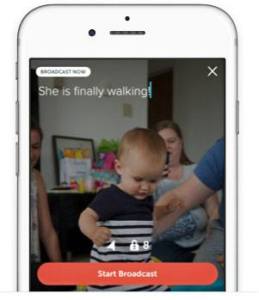
I’ve been excited to see live streaming apps like Periscope and Meerkat take off in recent months. These are a huge step toward Groupnets. Thanks Twitter for recognizing the incredible new intimacy, empathy, support, and emotional connectedness that live streaming offers. Let’s hope Google Fiber (wired), Project Fi (wireless), and other consumer-oriented initiatives continue to make progress against America’s anticompetitive telco and media oligopolies, which are building out their networks as slowly as they can, trying to delay the inevitable rise of peer to peer media, and all the empowering (and less financially controllable) new Little Guy business models that will allow.
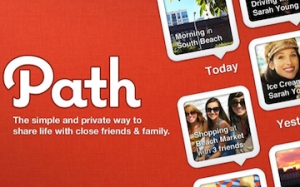
Remember Path? It is a Private Social Network that launched in 2010. Path allows up to 150 users to do intimate photo and message sharing with close friends and family. Its functionality has always been very limited (they didn’t do too much development with that $75M in VC money, apparently). Nevertheless it’s user base has grown, particularly outside the US (for example, 4 million Indonesian users by 2014) perhaps in places where customers were less picky about what was available. In 2014 Path got acquired by a South Korean internet company, Daum Kakao. South Korea’s bandwidth is two to three times better than ours, so with luck we may see Path do some interesting things as a Private Social Network in the next few years. Or not. We shall see.
South Korea, Japan, and a handful of other countries now rolling out 5G networks are places where you could build a first gen Groupnet platform today. They have better government guidance, less corporate lobbying slowing down the emergence of real internet competition, greater population densities, and other factors that combine to keep them beating the US at the critical public good of a dependable, cheap, blazing fast internet, the backbone for our digital life. Launch your Groupnet apps there first, and you could achieve First Mover Advantage.
Tinybeans is another deep sharing Private Social Network startup. It started in 2014, and doesn’t have very much funding yet ($1.75M on Crunchbase). But it’s management is taking a very clever approach. They are focusing the platform on sharing of children’s photos, among families. Targeting children’s photos, videos, and accomplishments seems a smart way to build a passionate Early Adopter core for a deep Private Social Network. Most of us are particularly sensitive about sharing children’s photos, so we don’t share many on Facebook, which has low user control and trust. As long as Tinybeans can navigate the legal issues with storing data on underage users, provide good functionality and prioritize security, privacy and control, they should grow nicely.
There are other examples of rich sharing private networks, like SmugMug for professional photography. But I don’t know of any other Private Social Network platforms that are designed for deep sharing among small groups, with features that promote social bonding, intimacy, group transparency, and human development. Please let me know if you do.
NextDoor has the potential to become this kind of social network, for a subset of their members. At first, I could see them helping folks to put more webcams on their front lawns, making our neighborhoods more transparent and secure — an easy sell to security-minded folks. Next they could help an internet of families, with its sensor packages and online archives, to emerge between those neighborhood homes that want greater intimacy between the children and adults in their various families. That’s a much more exciting and socializing development. But to do that, they’d have to make it easier for families that want to make friends with other local families to build out deeper profiles, and more easily find each other by interests, skills, projects, heritage, religion, political beliefs, age of children, and other search options, and set up easy ways for people to interact (dinners, hangouts) with each other in friendbuilding activities on their network. [2023 Note: I doubt NextDoor execs ever had an interest in any of this. It’s messy, exposes them to lawsuits, and has no relation to their extractive, soulless ad-driven business model.]
I think if Facebook was serious about improving social interaction, they’d buy or build something like NextDoor. They’d also buy or build something like Neighborgoods, a platform that allows local families to list things they’re willing to share, a good way to get people out of the solitary, consumption economy. Google could build out these local family tools in G+, and gain a few more points of market share growth (5% of over the next 5 years?) against Facebook. But will they? Even LinkedIn could build something powerful and personal to support local small businesses.
Big social network platforms seem lukewarm about building out stronger local communities. They also aren’t really in the business of helping people to connect more intimately, or supporting their psychological development. Perhaps this is because such efforts aren’t easily monetizable beyond goodwill, and can get messy, political, and controversial. So it will probably fall to the entrepreneurs to keep moving us toward this future.
But I think any good survey would show a substantial fraction of people want much better and richer connections with family and friends. Someone’s going to take seriously this deep common desire for greater intimacy, and build us an Internet of Family and a rich-featured deep sharing Private Social Network, starting with some Early Adopter families and their closest friends. It will grow rapidly from there. While writing this post I searched “Internet of Family” and see that others have come to the same conclusion. For example, see “The Internet of Family and Friends Will Rule the Future“, CMO, 7.21.15, by Tim Joyce of The Cambridge Group. These amazing advances in human connectedness and empowerment are coming. We want them, so it’s just a matter of time. I hope you’ll let us know in the comments wherever you see deep sharing Private Social Networks and an Internet of Family emerging, and what we can do to make them both come faster. One last thing.
Our Global Family, Biological and Adopted
Once the Internet of Family and rich Private Social Networks exist, it’s easy to see we’ll not only be able to stay deeply connected to our own biological family and friends around the globe, we’ll be able to easily reach out to families that we don’t know. It’s exciting to realize that among the those tens of millions of priviliged folk who have a strong desire for social justice, a good deal of that digital reaching out will be to the most at-risk families who really need our help. These new networks will help us to find and help others in very personal, one-to-one ways. By befriending and supporting a small group of others through them, we’ll also greatly help ourselves grow in personal effectiveness and wisdom.
I think Family Adoption, being encouraged to adopt (commit to long-term support) a family that is in great need, not just for an isolated encounter over the holidays, as happens commonly today, but for the years of childraising of the children involved, will become a new phenomenon on these platforms. Family adoption discovery systems will be built into all the better Private Social Networks and Groupnets, and the Internet of Family will make that adoption feel like we are bringing those individuals into our own homes. The death of distance that comes from affordable broadband and wireless and great sensors will give us the ability to really help, one on one, those folks anywhere in the world who need our help when they need it the most, the way we try to do within our own families today.

Handup.org, whose CEO and co-founder is my friend Rose Broome, runs a fantastic new charitable giving platform that offers direct ways to improve the lives of our homeless neighbors and other low-income local residents. Individuals are verified as needy by various community and homeless services groups around the country. At their Help Someone tab, you have the ability to directly help individual local people in need, and search their database by first name, neighborhood, or basic needs. 100% of your donation goes to your selected members needs. This is a fantastic way to give directly to those in need. In coming years, I look forward to seeing more intimate and realtime ways of connecting to any of the individuals in this database who might want such contact from their community of supportive “fans.”
Now imagine a service like Handup, launched today by a social entrepreneur in the slums next to any major emerging nations metropolitan area, like Lagos, Nigeria or Rio de Janiero, Brazil. [2023 Note: Or imagine such a service launched in all of the refugee camps around the world. UNICEF says 17 million children under 18 are presently growing up in such camps, with very limited living conditions, prospects and mobility. The World Bank says the average time spent in refugee camps is 10.3 years. The number of displaced children, forced from their homes by various events (war, famine, pandemic, climate, etc.) reached a new high of 43 million. These are large absolute numbers, but still very small relative to the billions of us who are not displaced, and are able to help.]
Such a service would offer us a searchable adoption needs database with thousands of families in need, and encourage each of us to adopt at least one of these families for a minimum period of time (five years?), and ideally stay intimately connected to them for a lifetime, or at least for the entire childhood of the children (theirs and ours), in a Private Social Network with an Internet of Family connecting us. Services to help our children learn each other’s languages and culture would be part of the platform, as well as a host of contract services to help the families in need. Visitors to the site would be encouraged to donate to help volunteers build the adoption needs database in countries and cities not yet represented. How many families do you think this service might help? Are there any such platforms today? If so, how can best we help them get greater visibility?

As to what families such platforms could prioritize for first help, consider the following disturbing fact from a 2013 Lancet series on Maternal and Child Nutrition: Roughly 3 million children (5 years and younger) die a year, one every ten seconds, 8,000 a day. These deaths are either a result of lack of adequate food for the mother or child, or diseases induced by undernutrition. Half of these child deaths occur in one planetary location of greatest need: Sub-Saharan Africa. Globally, undernutrition accounts for 45% of child deaths. Over 165 million living children today are both stunted and immunocompromised because of lack of adequate nutrition in their childhood. Eradicating extreme hunger, reducing child mortality, and improving maternal health are #1, #4, and #5 of the eight UN Millennium Development Goals.
How soon will it be before some social entrepreneur or human development NGO develops an Internet of Families sensor package and Private Social Network for adopting an at-risk family and improving their lives, beginning with things like better nutrition, housing, sanitation, and security? Would you adopt an at-risk family in Sub-Saharan Africa or some other place of great need if you could participate in their lives even more easily than if they were your physical neighbors? I certainly would. Let’s get it done!
We need a platform that NGOs and families everywhere can use to nominate and monitor the most at-risk moms, dads, and kids globally. If we can stick chips in our fancy household appliances, we can network and sensor-equip our adopted at-risk families in Mali, Chad, Pakistan, and everywhere else on this beautiful and sometimes dangerous planet. I would love to be able to see webcams of what my adopted family is doing right now and has been doing this week, with video, audio, images and data all auto-summarized on a Private Social Network. So would many others who want to give aid and develop lifetime personal relationships where they can matter most, in at-risk children and their parents, with minimal interference by NGOs between us and the people in need.
I’d love my baby to grow up talking and live streaming with her adopted sisters and brothers in another country. Surely, there are legal issues to work out. And security and political issues. Perhaps these social concerns, and specifically, an unwillingness to shoulder the legal risks that would ensure, are why even our leading global aid platforms, like Kiva.org, give us no way to directly contact or support the families to whom we give our microloans. There’s one word for this level of service, which is worth repeating: lame, lame, lame! Don’t tell us the problem can’t be solved. Even if there are political blocks to offering such a personalized service in some country, it could be offered in others, and the blockers would watch their kickbacks disappear as relief flows moved to where the light and personalization is best. And over the long term, autocratic leaders can’t stop cellphones and sensors and networks from penetrating illiberal countries. The network just keeps routing around the damage, as they say.
It’s time for a better solution to the terrible pain and misery that the world’s most at-risk families face every day. You can be sure some global entrepreneurs could create both formal and informal at-risk family adoption processes that scale with exponential speed, and put our formal adoption agencies to shame.
Here’s a Vision

Imagine that 20 million of the most at-risk families around the world are identified by trusted high-reputation individuals and NGOs and paired directly with one of the 440 million households of the thirty-four OECD member countries, on an Internet of Families and Private Social Network platform that nudges them into regular intimate and rich media communication with and financial, educational, emotional, and other support of their adopted family. That’s an NGO mission, and a call to shared responsibility and transparency, that would be a worthy channel for some of our global humanitarian impulses.
Imagine next that, over ten years of scaling, one out of twenty of these 440 million households (5% of the world’s privileged) decides to sponsor an at-risk family via this Internet of Families, either from another country or from among the homeless, disadvantaged, and poor of their own country, or county. That Early Adopter group would cover 22 million of the most needy families in the world. It would probably be the most satisfying philanthropy those sponsor families ever did in their lives, and it would also promote global interdependence in ways we can’t really imagine today.
A good Global Family Adoption platform will be evidence-based in its recommendations of support, maximizing quality-adjusted life years for the at-risk family by getting us most privileged folks to focus our donations and interactions on help with maternal and child nutrition, maternal, paternal and child education, reproductive choice counseling, and a host of other issues. Video snips of our adopted family and all their sensor data will be uploaded daily to the web, to record any violence or corruption or misfortune happening to them. Then we’ll start figuring out how to fight and stop that violence and corruption via mass action. When problems happen to your family, it becomes personal. We stop bitching about it and get out there and fix the problem.
Did you know that from 2011 to 2014 Malaysia gave out 1.5 million netbooks to their children and established thousands of village wi-fi hubs in their National Broadband Initiative? More of that kind of boldness is happening around the world every year now. There’s no reason some visionary entrepreneurs and funders can’t roll out a first generation Global Family Adoption platform with an Internet of Families and a rich Private Social Network today. Millions of us privileged families are ready to donate money to establish this kind of regular intimacy with those who need it most. There’s no reason we can’t use our technology now in this incredibly empowering way.
Edits? Additions? Changes? Comments always appreciated, thanks for reading.


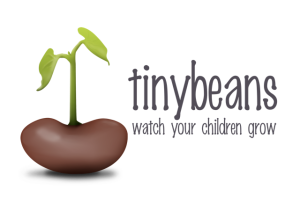
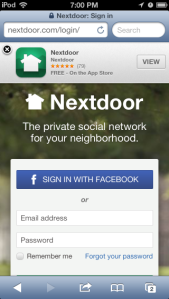
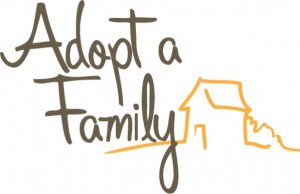

I think this is a great opportunity for a socially conscious entrepreneur to build an exponential organization that could crowd source individuals or families in need and help crowdfund their customized needs.
Whats interesting to me, like the use case and example of HandUp, is that there are many global organizations that already do a lot of this type of work. I think that the technology and market conditions already exist for an individual to partner with these Orgs and create a public benefits corporation that could impact the lives of millions or families.
What i think is even more interesting is that companies like Facebook, google, and others are trying to expand internet access into lower income countries, remote locations, and places that could benefit the most from the internet of families. Recently Facebook’s CEO Mark Zuckerberg announced that the most logical and helpful place to expand internet connection is in refugee camps.
Imagine that when a family gets processed into one of these camps, they are given a low cost internet enabled device and instructions on how to log into these networks. This would enable them to connect with other family members, aid organizations, and get help through companies like Hand UP or the proposed company talked about above.
I think we will see the emergence of more of these triple bottom line social benefit corporations with social justice mandates start to pop up all over the world.
Hey Tyler,
I think your refugee camp vision is a fantastic social entrepreneurship idea! Imagine an NGO that let each of us choose a Syrian refugee family right now, and sponsor connecting them up to the internet and to a picture sharing platform, and gave us ways to help them continue their education and advance their careers while they are stuck in the camps, as many unfortunately are for years. If they chose to migrate to Europe or elsewhere illegally, protesting our global community’s decision to leave Assad in power by “voting with their feet” (the most powerful and simple form of civil protest available) we could go along with them on their journey, if they had good robust hardware for connectivity, and multiple ways to connect.
Speaking of Facebook as a potential force for increasing intimacy, I’d love to see them offer a simple way for me to get all my and my friends Facebook photos to cycle as background pictures on my computers and phone. I also want the ability to remove any picture from the lineup with a simple click. Showing of captions, linking of faces, etc. could be an option. If I had this, I might add more photos to my Facebook account. Of course, one key nonfeature is that this photo cycling system must have NO ADS. Will Facebook ever offer such a thing to us? It would greatly improve our intimacy with our family and friends. I’m skeptical they’d ever do such a thing unless they were losing share to other social networks. Google might give us a great multidevice background photos platform, and i’d pay a low annual fee to get that as a pro service. But even El Goog may wait until some entrepreneur builds it out on some kind of private social network vertical, and people show how much they love it by constant use.
These big companies really aren’t focused much on increasing our intimacy or personally empowering us yet, in my opinion. If either of them were, then promising local networking platforms like NextDoor would already have been purchased by and integrated into Facebook or G+. We’d be empowering local communities, and families, in more useful ways.
For another example, why can’t I see, on a social network, all the tools my neighbors are willing to loan, so I don’t have to go buy things I can share? Neighborgoods is working on that problem, for example. Why isn’t Neighborgoods idea built into one of these leading social networks yet? Perhaps because it doesn’t make the platform money, it simply empowers the users. Not to be too cynical, but perhaps it pisses off some big advertisers too, like Home Depot and Lowes.
Again, exponential entrepreneurs need to lead the way. Eventually these social networks critical features, and bandwidth, will be commoditized. Then we’ll be a able to spend most of our times in those networks that connect us deeply to just those key people we really want to be connected to, in ways that deeply reflect our personal values.
Thanks again for your great comment!
Excellent update on the Symbiont scenario! The Internet of Families is certainly on the cusp and this piece clearly articulates some of the very powerful positive aspects of such emerging structures.
I’d bet that tens of thousands of family groups already do exist on G+ and FB. But the growing demand for private groupnets will no doubt spawn some new unicorns (maybe Path already counts) aiming to fulfill the scenarios you’ve presented.
These networks will need to overcome several major limiting factors: 1) privacy/security, 2) TOS / data ownership and 3) sheer usefulness – if they are to meaningfully distinguish from Facebook and G+. In a saturated social media environment, Facebook is currently the most useful and simple go-to network – probably hosting the most Family Groupnets on the planet. To overtake FB as the go-to front-end and back-end for Group and Family Nets, other networks will need to either A) provide either way more utility, or B) wait for a titanic shift in peoples’ demand for greater privacy and security – perhaps requiring a “Chernobyl of social networks” event that network expert Valdis Krebs has hypothesized: https://www.youtube.com/watch?v=nTbboNQ31Ig
Hi Alvis,
Great insights! Thanks for reminding me of that excellent Future of Facebook video you did in 2012. There are some really thoughtful predictions there.
I found this idea from Stowe Boyd provocative: “The rise of a truly open social web is the biggest challenge to Facebook. And it will ultimately derail it and sideline it.”
I’m not on board with Stowe’s vision, but I really appreciated this prediction nonetheless, as I had to better formulate my own thoughts in reacting to it. I don’t think openness is a key issue that will “sideline” the Facebook we use today. Openness isn’t really what most people want. They want the opposite: greater intimacy, security and utility of connectivity with a select subset of people, not the world.
For that to happen, a basic level of openness in standards and access certainly must be maintained, and the key features people want need to be commoditized. Then lots of networks can offer useful connectivity. At that point, there can be an arms race in the usefulness of groupnets, and the AI and other features we add to them.
For me, here’s the key point about AI as a platform feature differentiator. Facebook’s AI may be better than the private network’s AI and I still wouldn’t use it if I have low trust with them, if I don’t think they treat me with enough respect, or reflect my values. In fact, the more powerful their AI becomes, the more “creepy” it could potentially be, so the more I’d hold them to a higher standard.
So in a world with better AI in our networks, I’d much rather use a Private Social Network whose AI is weaker but fully reflects my values. As long as all the platform’s AIs will continue to improve their annual functionality exponentially, relative to me, I think AI isn’t as powerful a differentiator as it might at first seem.
What will most motivate my decision of platform, once features and connectivity are reasonably commoditized, will be the values of the network, and how they treat me as a user. Is it run by people with my cultural or belief heritage? Does it care about what I care about? Is it helping me to grow as an individual? All the groupnet and evidence-based psychology features should then become paramount.
I’m expecting a new profusion of specialized Private Social Networks to come about once a critical level of groupnet functionality exists within them. Facebook won’t go away of course, but I’m hopeful that the Facebook of today will become like network TV, if it continues down its current path. Perhaps not quite “sidelined”, but certainly “low value”. Facebook Groupnets will be the high value part of Facebook. People may have pay more for that, to get away from the ads, but they’ll still be under Facebook surveillance, which some will have a problem with in a world with other options.
The more things change, the more some things stay the same, eh?
Thanks a lot for your comment!
“What we really want to connect better on this precious planet right now are people, even more than gadgets.”
This statement really strikes me, and I think does an eloquent job of describing a large portion of modern human behavior. We are social animals by nature, and in a world of exponentially growing information flooding into our channels every day, it’s no wonder why many people on the planet can start to feel lonely when they can be seen as only a few numbers, bits of average information being parsed through algorithms that don’t account for ‘feelings’. A thought I was toying with earlier was that with the rapid growth of technology and the soon arrival of digital twins to offset some of the burden of an individual managing their affairs, the time we will have to ourselves will allow us to seek the connectedness of other individuals. As technology will also allow us to accomplish more in our lifetimes, we will get to a point where it’s not enough to be successful, but we will be required to relate better with one another and build relationships to accomplish our greatest goals. What the world has plenty of is people, but not enough trained individuals to accomplish the massive projects many entrepreneurs now have.
With large companies like Facebook increasing the level of internet connectivity to families in all parts of the world, I can absolutely see people starting to “adopt a family” and open a line of communication with people they can feel personally connected to. I see apps like Periscope paving the way for people in these very impoverished areas finally being able to broadcast their reality to the world and we’ll know exactly what problems there are in the world and it will make us think of new ways to solve these problems. I recall a famous TED talk by Sugata Mitra on the new generation of students in the world, who are teaching themselves online in this digital age. Many issues we discuss today will be solved exponentially faster by the DIY innovators and autodidactic students than we could ever expect a school teacher in the student’s village to pass along. The families that will be able to video call one another and share about their lives will help one another solve problems cheaply and effectively that otherwise would have taken an expensive trained expert to solve. This is all part of what I envision happening after all of the gadgets that companies are creating have been connected and people can start focusing more on building their relationships to conquer the grand challenges that lay in store for the human race.
Really great article, I enjoyed reading over it multiple times!
Hi Kaleb,
Thanks for the awesome comment! I was particularly inspired by your vision of how much better learning and problem solving will be in an Internet of Families / Groupnet era. This sentence turned on the light for me:
“Many issues we discuss today will be solved exponentially faster by the DIY innovators and autodidactic students than we could ever expect a school teacher in the student’s village to pass along.”
Strengthening all our relationships, and keeping us on a really powerful self-education and personal development path seem to be central to the kind of world we’re creating. Figuring out how to inspire and help everyone to get there faster and smarter is thus the center of the foresight work we do. I’m going to have to rewatch that awesome Sugata Mitra (Hole in the Wall) education bootstrapping TED 2013 talk now! Here it is for others who want to see it (22min):
Hey John, I just want to thank you for posting that talk, i haven’t seen it before. That is one of the most powerful things I think I have ever seen. As a humanist I got choked up a little bit, the mind and being social with one another is truly amazing.
Really interesting subject. I’ve been thinking a lot lately about how online communities can also go horrifically wrong when confronted with the terrifying role a specific 4chan group played in the recent college shooting in Oregon. Self-selected groups of dysfunctional individuals, reinforcing abhorrent thought patterns among themselves are very dangerous indeed.
Great insights Jake. Fortunately, all the digital versions of these communications are transparent. They are being analyzed for content by all kinds of NLU systems these days, not only the ones owned by the platform, to prevent abusive behavior (or they should be), but also the ones run by the intelligence agencies. Dysfunctional groups in the past weren’t nearly as transparent, so they could survive a lot longer before someone outed them. Today, more people can form dysfunctional small groups (easier to find like minded folks of all types), but the dangerous or abusive ones are also found and outed far faster. So social learning is truly accelerating. As communication modes open up, social stability “gets worse before it gets better,” better and stabler than it was before the networks emerged. Two authors who really state this well are David Brin in The Transparent Society, and Ian Bremmer in The J Curve. Both books really helped convince me that on balance these kind of groupnets will be huge forces for good.
To make a partly bad group much more extreme, really fast, bad actors have always been able to find a small Bunch of Guys (a BOG, in intelligence-speak) who are young, poor, and already partly self-radicalized, and then give them anonymous money on a periodic basis, but make it clear it goes only to those who doing or planning the most radical yet still plausible things. Apparently that’s how the 9/11 plans emerged, and were funded, from the Hamburg BOG in Germany. Understanding these dynamics makes it clear that anonymous money transfers are also going to have to disappear in coming years. The more powerful our S&T gets, we just can’t afford anonymous BOGs as a society. In our increasingly transparent society, privacy must be well respected (what groups do and say in private needs to stay private, with penalties for anyone making those conversations public) but anonymity finally disappears. Something bad happens, we can serve the digital subpoenas and use surveillance and sousveillance streams to track down the bad actors. That’s a world we’re already partly into today, and one I’m looking forward to fully arriving in coming years.